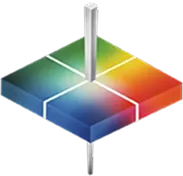
For diverse industries and biopharmaceutical applications, color measurement is critical to ensuring the safety and quality of products. Two color measurement devices that industries may use for these requirements are a spectrophotometer and a Chroma meter. While these devices have some general applications in common, their measurement methods and uses have some key differences.
Which option will work best for your needs? The answer depends on how you’ll be using the device and what results your operations require. Explore how these two devices differ and which option is best for your specific applications.
What Is a Chroma Meter?
Technically classified as a colorimeter, the Chroma meter measures how much of a concentrated wavelength is absorbed through a solution. This device is used in a wide variety of industries, including plastics, automotive interior manufacturing, exterior color control, food, chemicals, coatings and cosmetics. Known for its user-friendly interface, the Chroma meter uses CIE L*a*b* and CIE L*C*h color spaces to precisely identify colors.
A Chroma meter is:
- Specialized to compare products with predefined samples
- Able to memorize target colors
- Able to calculate color differences
- Optimized for monitoring color quality
This device offers the advantage of working quickly for rapid measurement results. It also tends to be more portable than other measurement options and is highly cost-effective. However, the Chroma meter also has a limited range of data and lacks versatility for research and product development applications.


